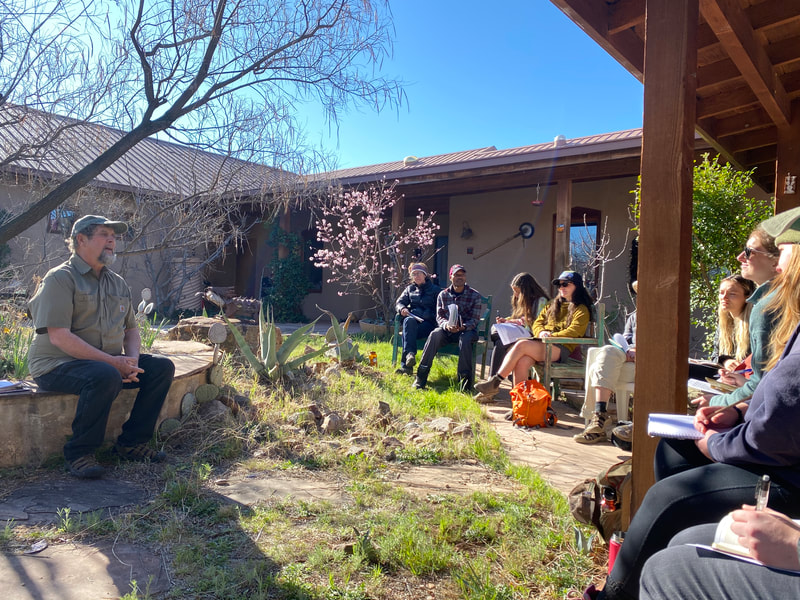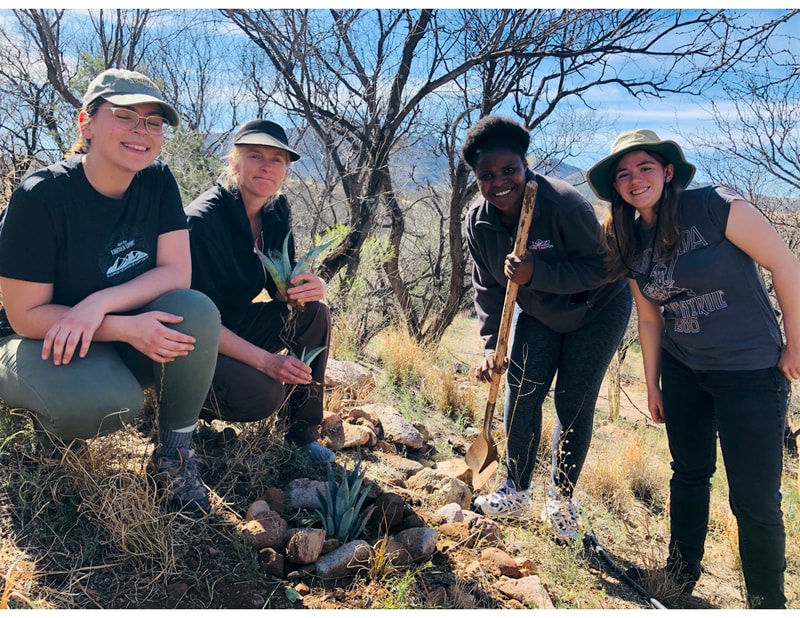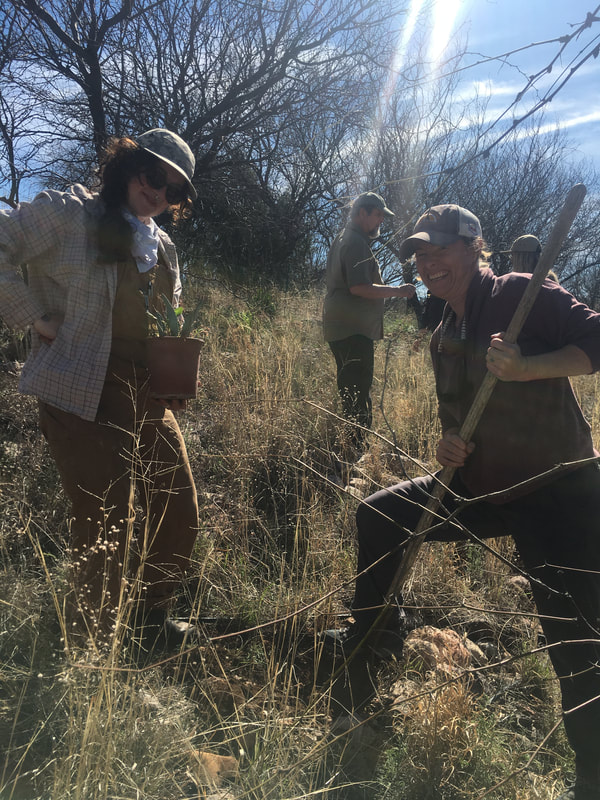Rosemary LoganCheckout the Spring 2020 section of NAU's two-semester Permaculture Design Course Blog! Archives
December 2023
Categories |
Back to Blog
by Kira Farmer and Shaelyn Lau Our permaculture class had the privilege of being invited onto Gary Nabhan’s property in Patagonia, Arizona where he focuses on implementing dryland farming principles on arid lands in a time of water scarcity and drought, energy use transition, and accelerated climate change.
To further support this belief, Nabhan provided us with seven tips that he deemed essential in creating an agrisystem in the Sonoran Desert:
One of the biggest take-aways we got from Gary refers to tip number 4, where we talked about agrivoltaic systems, in which you can grow food under solar panels on stilts. This allows energy generation for greenhouse production and other power-necessitated activities while creating micro-environments underneath and around that are buffered from high heat, freezes, hails, etc. They also embody permaculture principles in that they also work with their human counterparts, providing shade for relief from heat exhaustion that many farm workers experience when harvesting in arid landscapes. What is amazing about agrivoltaic systems is that a space has now been transformed from only one type of generation to the generation of energy and food in the same space! Water was a big topic when talking about producing food in Aridamerica. We talked of the exponential growth in energy costs as we dig deeper down per foot to pump water. We talked about the risk of the salinization of soils as the groundwater gets tapped out without time to recharge. When it comes to experimenting with creative and innovative means of producing food in hotter, dryer landscapes, permaculture principles will serve as a baseline for restructuring the way we grow food as designs shift to meet our environment in the state they are in. For most places, this will include less abundance of water. The biggest shift, Nabhan talked of, was the necessary change in mindset for farmers. How restructuring what you grow, when and how you grow it, and the scale at which you grow will be essential. Farmers should be looking to native crops in their region and prioritize perennials in order to increase the stability of their landscapes, working with nature instead of against it. This tied to the growing labor and research he was conducting when we visited him. He talked of the power of agave and mesquite. Two native plants to the Sonoran Desert. Agave and mesquite when companion planted have the capacity to draw massive amounts of CO2 from the atmosphere into the ground and produce immense amounts of above and below ground biomass on a year to year basis. They require little to no irrigation to survive as well as thrive, making them almost impervious to rising global temperatures and droughts. Not only are they important for regenerating the landscape, but agave is found to be nutritious as a food product with probiotic elements rather than simple sugars. Agave when used with permaculture principles (not being turned into syrups or tequila) can help to combat diabetes rather than cause it because all the nutrients and carbohydrates are not cooked away. As we navigate a shifting world and a climate that will force us to adapt to drier and hotter landscapes, both in the food we produce and in our communities of humans, it is important to begin to re-vision who we are and how we are a part of this world. Gary Nabhan introduced us to his use of the word holobiomes. We should no longer consider ourselves as human beings. Moving away from our Western notion of being separate from or dominant over the natural world but of it. We are holobiomes just as soil is a microbiome. Holo meaning whole, entire, complete. We would like to extend our utmost gratitude to Gary Nabhan and his wife, Lori, for hosting us and sharing their wealth of knowledge. We can't wait to implement these tools into our own lives.
1 Comment
Read More
|
 RSS Feed
RSS Feed









